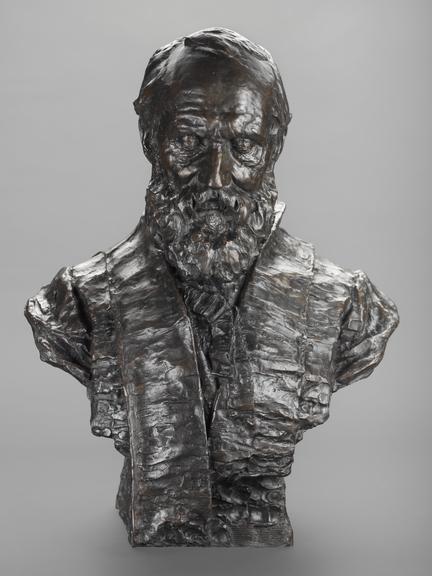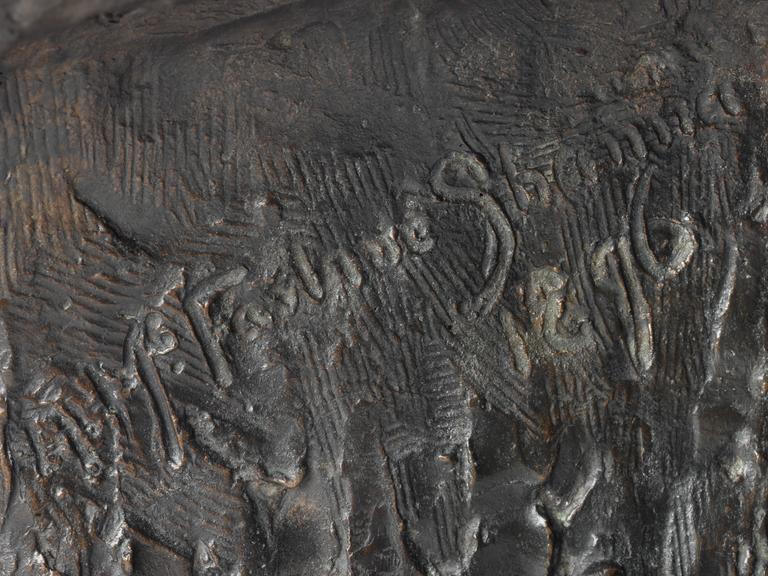
Portrait bust of Lord Kelvin, 1896
1896





Bronze bust of Lord Kelvin with original stand by A. McFarlane Shannan, Glasgow, 1896.
William Thomson, later Baron Kelvin of Largs (1824-1907), was an Irish physicist and mathematician who became one of the world's greatest nineteenth-century scientists. He was a key figure in the development of the first transatlantic telegraph cable and invented many important scientific instruments. He was born in Belfast in 1824, and attended lectures at Glasgow University when he was just 10. In 1841 he became a student of St Peter's College, University of Cambridge, where he published 11 papers over the course of his undergraduate career. He became Professor of Natural Philosophy at Glasgow University in 1846. He was made director of the Atlantic Telegraph Company in 1856, and was on board the HMS 'Agamemnon' when the 1857 attempt at a transatlantic telegraph cable was being laid. His mirror galvanometer, a sensitive instrument for detecting electrical signals, made long-distance submarine cables a practical and commercial proposition.




